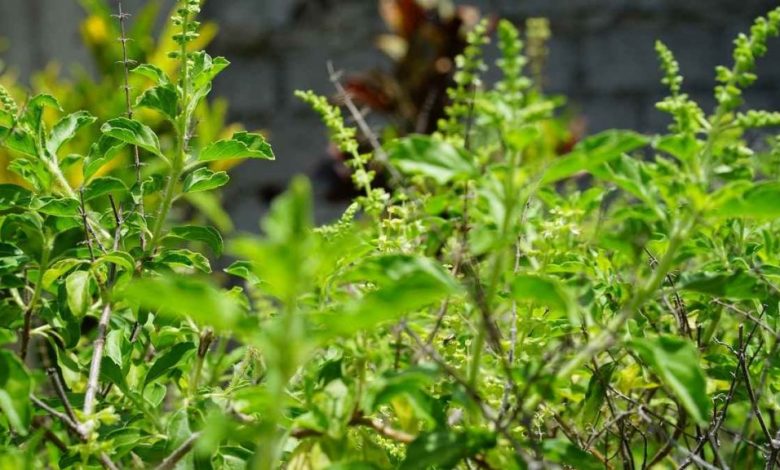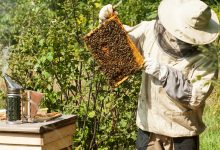
Tulsi, a prevalent herb known as the Indian basil or the holy basil, is usually related to India as the Queen of Herbs. As we know to some extent, the tulsi is mainly known as the Hinduism goddess. This is commonly known for worship in India for Hinduism. It is natively originated in India and is cultivation primarily in the Southeast Asian tropics. Many ancient history and stories are connected with Tulsi, from the time of god till now. Tulsi was the goddess in our ancient history in spiritual; that’s why Hinduism worshipped her and included its leaves for occasions and to worship.
“Tulsi is a holy plant for Hindus, worshipped as the avatar of Lakshmi, which may be planted in lawns of Hindu houses or temples. The ritual lighting of lamps and diyas each evening during Kartik includes the worship of the tulsi plant. We also include tulsi for the Bhog plate for Lord Krishna. According to the spiritual conditions, Lord Krishna only accepts the bhog with tulsi”.
Cultivation Of Tulsi Farming
The Tulsi plant is hardy in nature and can be grown on an extensive range of soils. However, high sandy loam soils with good drainage are perfect for its cultivation. It avoids highly alkaline, saline, and waterlogged soils. Well-drained soils with good natural material will result in good vegetative growth of the plant.
Soil Condition: Holy basil grows well on an extensive range of soils. High loam, poor laterite, saline and alkaline to slightly acidic soils are also well suited for its farming. Well, drained soil helps in better growth.
Climate: It grows well under high rainfall and humid conditions. Long days and high temperatures become very favourable for plant growth. It can grow up to a height of 900 m. The Tulsi plant is relatively bearable of drought and frost.
Propagation: Tulsi is produced through seeds. Seeds will decline over generations due to their high crossbreed. Hence, for fresh plantings, the farmers have to take new seeds from the ancestry stock. For better propagation, land preparation, a farmer should use a Mahindra 265 tractor for expected results.
Planting Time: The nursery of tulsi should be proposed in the third week of February, and its transplanting should be done in the middle of April.
Harvesting: The crop is harvested at the full blossom stage to obtain maximum required oil yield and better quality oil. The first harvest starts at 90-95 days of planting. After that, it may be harvest every 65-75 days. It is best to do harvesting on bright sunny days for high and good quality oil or vegetative growth.
Tulsi Farming Popularly Grown In India
Tulsi is an indigenous plant and is best to grow extensively in India. The cultivation of tulsi in the Gir Wildlife Sanctuary and Sasangir National Park in India. It grows in the wild tropics and warm regions.
It has many names at different places like Holy Basil in English, Thulasi in Tamil, Tulasi in Punjabi, Imli in Urdu etc.
Benefits Of Tulsi Farming / Basil
The Tulsi plant has many medicinal properties. For example, its leaves strengthen the stomach and help in respiratory infections. In addition, it has a strengthening effect on the kidney.
Boosts Immunity
Chewing Tulsi Farming leaves and drinking tulsi boiled water helps to boost your immunity. It also relieves sore throat, cold, cancer-causing cells and also prevents life-threatening cells.
Heals Infections
It has many anti-inflammatory properties, which help to reduce inflammation and healing wounds quickly.
Purifies the Blood
Tulsi Farming herbal tea gives many privileges to the body and purifies blood, which helps to skin healthy and glowing.
Lowers Blood Pressure
Tulsi Farming is a powerful medicine for headaches, anxiety, depression, low high blood pressure and cholesterol levels.
Treats Respiratory Disorders
In this polluted environment, tulsi helps to prevent asthma and bronchitis.
Maintains Blood Sugar Level
Consuming Tulsi Farming in any form helps to improve the metabolism process and also maintains blood sugar levels.
- Take medicine for its fresh flowers for bronchitis.
- Use its leaves and seeds with black pepper to prevent malaria.
- It’s a whole plant for diarrhoea, nausea, and vomiting.
- it as a paste and pill for eczema.
- an alcohol essence for ulcers and eye problems.
- an oil made from the leaves for insect bites.
The whole plant of basil is for human use, and its curative value has contained more benefits.
- It contains vitamin A and C
- Also added calcium
- Contains also zinc
- Contains also iron
- And also contains chlorophyll
Get all information or updates about farming, keep in touch with us.



